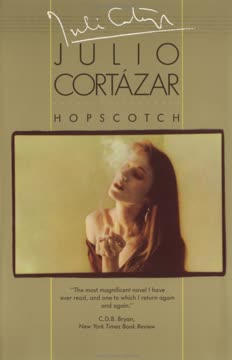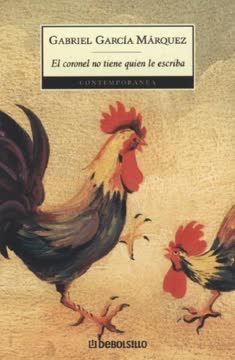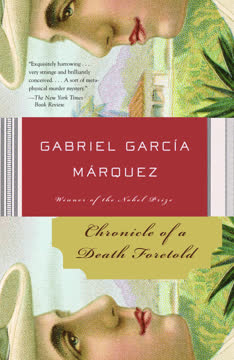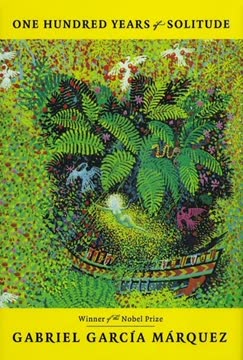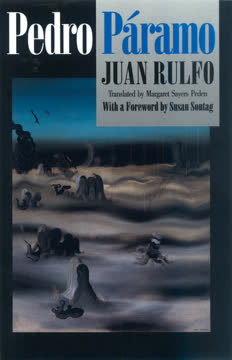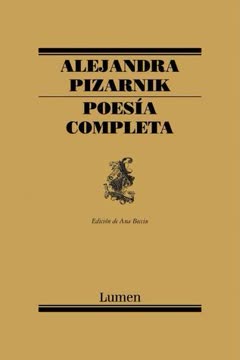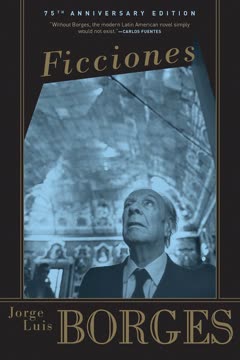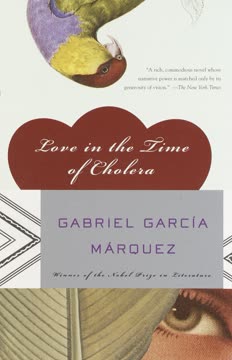Plot Summary
Bridge of Chance Encounters
Horacio Oliveira, an Argentine intellectual adrift in Paris, drifts through the city's bridges and streets, especially the Pont des Arts, where he often encounters La Maga, a mysterious Uruguayan woman. Their relationship is built on serendipity, not plans—each meeting feels fated, yet accidental. The city's geography becomes a map of their emotional landscape, with bridges symbolizing both connection and the impossibility of true union. Oliveira's search for La Maga is less about finding her than about seeking meaning in randomness, and the city's labyrinthine streets mirror his own internal confusion. Their love is spontaneous, unstructured, and always on the verge of dissolving, as if the act of searching is more important than the act of finding.
The Serpent Club's Nights
Oliveira and La Maga are part of the Serpent Club, a loose circle of expatriate artists, musicians, and thinkers who gather in smoky Parisian apartments. The Club's members—Ronald, Etienne, Gregorovius, Babs, Wong, and others—debate art, jazz, metaphysics, and the meaning of life, often with playful irony. Their conversations are a blend of high theory and low comedy, punctuated by jazz records and vodka. The Club is both a refuge from and a microcosm of the chaos outside, a place where ideas are exchanged as easily as insults. Yet, beneath the surface, each member is isolated, their connections as fragile as the music they love. The Club's nights are a dance of intellect and emotion, a hopscotch between seriousness and absurdity.
Searching for La Maga
Oliveira's relationship with La Maga is defined by absence and longing. She is both his muse and his mirror, reflecting his own uncertainties back at him. Their love is passionate but unstable, marked by misunderstandings and missed connections. La Maga's simplicity and openness contrast with Oliveira's intellectual complexity and self-doubt. He is drawn to her spontaneity but frustrated by her lack of intellectual rigor, while she is both enchanted and wounded by his detachment. Their search for each other becomes a metaphor for the search for meaning, for a center that always slips away. The act of searching itself becomes the only certainty in their lives.
Hopscotch of Love
The title's metaphor comes alive as Oliveira and La Maga's relationship is played out like a game of hopscotch—jumping from square to square, never quite reaching "Heaven." Their love is a series of rituals, both tender and destructive, where intimacy is always shadowed by the threat of loss. The hopscotch grid is a child's game, but for the adults in Cortázar's world, it becomes a symbol of existential striving: the desire to reach a transcendent state, only to be pulled back by gravity, habit, or fate. The rules are arbitrary, the outcome uncertain, and the players are always at risk of falling.
Rocamadour's Fragile Center
La Maga's infant son, Rocamadour, becomes the emotional center of the group, a symbol of innocence and vulnerability. His presence brings out both the best and worst in the adults around him, exposing their fears, hopes, and inadequacies. When Rocamadour falls gravely ill and dies, the event shatters the fragile equilibrium of the Club and devastates La Maga. For Oliveira, Rocamadour's death is a confrontation with the limits of reason and the inadequacy of language to express grief. The tragedy forces each character to confront their own emptiness and the impossibility of true connection.
Jazz, Art, and Exile
Jazz music, modern art, and literature are woven throughout the narrative as both solace and challenge. The Club's members use art to escape the banality of everyday life, but also to confront the chaos within themselves. Jazz, with its improvisational structure, becomes a metaphor for the characters' attempts to find order in disorder. The expatriate experience in Paris is both liberating and alienating, as the characters struggle to define themselves outside their native cultures. Art is both a bridge and a barrier, offering glimpses of transcendence but never delivering lasting peace.
The Collapse of Order
As the narrative progresses, the fragile order of the Club and Oliveira's relationship with La Maga begins to unravel. Misunderstandings multiply, resentments fester, and the group's rituals lose their meaning. La Maga, devastated by Rocamadour's death and her own sense of inadequacy, disappears from Oliveira's life. The Club fractures, and each member retreats into their own solitude. Oliveira is left alone, haunted by memories and regrets, unable to reconstruct the world he has lost. The collapse of order is both personal and philosophical, a recognition that meaning cannot be imposed on chaos.
Parisian Disconnections
Oliveira's sense of alienation deepens as he wanders the streets of Paris, disconnected from the people and places that once gave his life meaning. The city, once a site of possibility, becomes a labyrinth of loss. Language, which once promised connection, now seems inadequate and deceptive. The narrative itself becomes fragmented, mirroring Oliveira's fractured consciousness. The search for unity gives way to an acceptance of multiplicity and ambiguity. The only certainty is uncertainty, the only home is exile.
The Buenos Aires Return
After La Maga's disappearance, Oliveira returns to Buenos Aires, hoping to find solace in familiar surroundings. Instead, he finds himself more alienated than ever, unable to reconnect with his past or the people he once knew. The city is both home and exile, a place where memories are both comforting and suffocating. Oliveira's attempts to find meaning in work, friendship, and routine are undermined by his persistent sense of dislocation. The return is not a resolution, but another turn in the hopscotch game, another failed attempt to reach "Heaven."
Traveler, Talita, and the Circus
In Buenos Aires, Oliveira reconnects with his old friend Traveler and Traveler's wife, Talita. The three become entangled in a complex triangle of affection, rivalry, and projection. Working together in a circus and later in a mental clinic, they attempt to create a new order, but old patterns of misunderstanding and longing persist. Talita becomes a surrogate for La Maga, and the boundaries between friendship, love, and identity blur. The circus, with its illusions and performances, becomes a metaphor for the characters' attempts to impose meaning on their lives.
The Clinic of Mirrors
The move to a mental clinic brings the characters face to face with madness, both in others and in themselves. The clinic is a house of mirrors, where identities are fractured and roles are reversed. Oliveira and Traveler become doubles, each reflecting the other's fears and desires. Talita is caught between them, both object and subject of their projections. The boundaries between sanity and insanity, reality and illusion, become increasingly porous. The clinic is both a refuge and a prison, a place where the search for unity becomes a confrontation with multiplicity.
Madness, Doubles, and Endings
The novel's final chapters are a series of confrontations—between Oliveira and Traveler, between Oliveira and himself, between the characters and the world. The themes of doubling, substitution, and reflection reach their climax as the characters struggle to define themselves in relation to each other. The possibility of reconciliation is always shadowed by the threat of dissolution. The ending is deliberately ambiguous, offering no easy answers or resolutions. The game of hopscotch continues, the search for meaning is never complete, and the only certainty is the necessity of continuing to play.
The Unfinished Game
Hopscotch famously offers multiple ways to read its chapters, inviting the reader to become an active participant in the construction of meaning. The novel ends not with closure, but with an invitation to begin again, to reread, to reinterpret. The unfinished game is both a metaphor for life and a challenge to the reader: meaning is not given, but made, and the only way to win is to keep playing.
Characters
Horacio Oliveira
Oliveira is the novel's protagonist, an Argentine intellectual living in Paris and later Buenos Aires. He is defined by his restlessness, skepticism, and relentless self-analysis. Oliveira is both brilliant and paralyzed, capable of profound insight but unable to act decisively. His relationships—with La Maga, the Serpent Club, Traveler, and Talita—are marked by ambivalence and longing. Psychologically, Oliveira is torn between the desire for unity and the acceptance of multiplicity, between reason and emotion, between engagement and withdrawal. His journey is both external and internal, a search for meaning that is always deferred.
La Maga (Lucía)
La Maga is Oliveira's lover and the emotional center of the novel. She is spontaneous, open, and unselfconscious, in contrast to Oliveira's intellectualism and self-doubt. La Maga's simplicity is both her strength and her vulnerability; she is often dismissed as naïve, but her intuition and capacity for joy are sources of wisdom. Her relationship with Oliveira is passionate but fraught, as she is both drawn to and wounded by his detachment. La Maga's disappearance marks the novel's turning point, and her absence haunts Oliveira throughout the rest of the story.
Traveler
Traveler is Oliveira's old friend in Buenos Aires, a practical, down-to-earth man who serves as a foil to Oliveira's intellectualism. He is married to Talita and works in a circus and later a clinic. Traveler is both supportive and critical, challenging Oliveira's self-absorption while also being drawn into his existential dilemmas. Psychologically, Traveler represents the possibility of engagement with the world, but he is also haunted by his own doubts and insecurities. His relationship with Oliveira is marked by rivalry, affection, and a sense of doubling—they are two sides of the same coin.
Talita
Talita is Traveler's wife and becomes a central figure in the Buenos Aires chapters. She is practical, compassionate, and intelligent, but also caught between the competing desires of Oliveira and Traveler. Talita becomes a surrogate for La Maga, and her identity is shaped by the projections of the men around her. She is both subject and object, both actor and acted upon. Psychologically, Talita represents the possibility of reconciliation, but she is also a victim of the novel's endless substitutions and doublings.
Rocamadour
Rocamadour is La Maga's infant son, a fragile presence who becomes the emotional center of the Parisian group. His illness and death are a turning point in the novel, exposing the limitations of reason, the inadequacy of language, and the vulnerability of love. Rocamadour's fate is a catalyst for the dissolution of the Club and the unraveling of Oliveira and La Maga's relationship.
Gregorovius
A member of the Serpent Club, Gregorovius is a stateless intellectual who serves as both participant and observer. He is fascinated by Oliveira and La Maga, often psychoanalyzing their relationship and his own. Gregorovius is both empathetic and detached, a mirror for the other characters' anxieties. His outsider status allows him to see what others miss, but also isolates him from true connection.
Etienne
Etienne is a painter and a core member of the Serpent Club. He is critical, witty, and often exasperated by the group's endless debates. Etienne represents the artist's struggle to find meaning in chaos, and his skepticism is both a defense and a limitation. He is both attracted to and frustrated by La Maga's simplicity and Oliveira's complexity.
Ronald
Ronald is a jazz musician and one of the most stable members of the Serpent Club. He provides a sense of rhythm and harmony to the group, both literally and metaphorically. Ronald is a mediator, often smoothing over conflicts and bringing people together. His love of music is a source of solace and connection, but he is also aware of the limitations of art.
Babs
Babs is Ronald's partner and a lively presence in the Club. She is emotional, impulsive, and often serves as comic relief. Babs's reactions are a barometer for the group's emotional state, and her outbursts often reveal underlying tensions. She is both a participant in and a commentator on the group's dramas.
Wong
Wong is a Chinese member of the Serpent Club, known for his philosophical insights and playful provocations. He challenges the group's assumptions and introduces alternative perspectives, often through humor and paradox. Wong's outsider status allows him to see the group's dynamics more clearly, but also keeps him at a distance.
Plot Devices
Nonlinear Structure and Reader Participation
Hopscotch is famous for its unconventional structure, offering multiple ways to read its chapters. The novel can be read straight through or by "hopscotching" according to a suggested sequence, mirroring the game's unpredictability. This device breaks the illusion of authorial control and invites the reader to become a co-creator of meaning. The fragmented narrative reflects the characters' fractured consciousness and the impossibility of imposing order on chaos. The reader's participation is both a challenge and a liberation, emphasizing the novel's central theme: meaning is not given, but made.
Doubling, Mirrors, and Substitution
Throughout the novel, characters serve as doubles, mirrors, or substitutes for one another—Oliveira and Traveler, La Maga and Talita, Paris and Buenos Aires. These doublings blur the boundaries between self and other, reality and illusion. The motif of substitution highlights the instability of identity and the impossibility of true connection. The characters' attempts to find unity are always undermined by the persistence of difference and the inevitability of loss.
Games, Rituals, and Childishness
The game of hopscotch is both a literal and metaphorical presence in the novel, symbolizing the characters' attempts to reach a transcendent state. Games and rituals structure the characters' lives, offering moments of order in a chaotic world. Yet, these structures are always provisional, subject to collapse. The return to childishness is both a longing for innocence and a recognition of its impossibility.
Jazz and Improvisation
Jazz music is a recurring motif, representing the tension between structure and improvisation, order and chaos. The characters' lives are like jazz solos—improvised, unpredictable, and always on the edge of dissolution. Jazz becomes a metaphor for the search for meaning, the possibility of harmony in dissonance, and the acceptance of uncertainty.
Metafiction and Self-Reflexivity
Hopscotch is deeply self-reflexive, constantly drawing attention to its own artifice. The characters discuss literature, language, and the act of writing, and the narrative is filled with digressions, quotations, and philosophical asides. The novel questions the possibility of representation, the adequacy of language, and the role of the author and reader. This metafictional stance is both playful and profound, inviting the reader to question their own assumptions about fiction and reality.
Analysis
Hopscotch is a radical experiment in narrative form and existential inquiry, a novel that both enacts and interrogates the search for meaning in a fragmented, chaotic world. Through its nonlinear structure, shifting perspectives, and self-reflexive style, Cortázar invites the reader to become an active participant in the creation of meaning, mirroring the characters' own struggles to find coherence in their lives. The novel's central metaphor—the game of hopscotch—captures the tension between order and disorder, aspiration and failure, connection and isolation. Love, art, and friendship are both sources of solace and sites of conflict, as the characters oscillate between longing for unity and accepting the inevitability of multiplicity. Hopscotch is ultimately a celebration of uncertainty, a recognition that meaning is not given but made, and that the only way to "win" the game is to keep playing, to embrace the provisional, the ambiguous, and the unfinished. In a modern context, the novel's lessons are clear: life is a game without fixed rules, and the search for meaning is an ongoing, collaborative process—one that requires both courage and humility, both playfulness and seriousness.
Last updated:
FAQ
Synopsis & Basic Details
What is Hopscotch about?
- A Labyrinthine Quest: Hopscotch follows Horacio Oliveira, an Argentine intellectual in Paris, as he navigates a bohemian existence, a passionate but volatile relationship with La Maga, and profound existential questions. The narrative is a non-linear exploration of his search for meaning, authenticity, and a "center" in a world he perceives as fragmented and absurd.
- Two Paths, One Journey: The novel offers two reading orders: a conventional path ending at Chapter 56, and a "hopscotch" path that jumps between chapters, including "expendable" ones. This structural choice mirrors Oliveira's own meandering quest and the novel's central theme of multiple realities and interpretive freedom.
- Exile, Art, and Love: At its core, the story delves into the lives of expatriates in Paris, their intellectual debates in the "Serpent Club," and the complexities of human connection. It explores how love, art, and philosophy serve as both escapes from and confrontations with the inherent chaos and loneliness of existence.
Why should I read Hopscotch?
- Unparalleled Reader Engagement: Hopscotch challenges traditional reading by offering a nonlinear structure, inviting you to become an active participant in constructing the narrative. This unique approach makes the reading experience deeply personal and intellectually stimulating, unlike any other novel.
- Profound Philosophical Inquiry: Beyond its plot, the novel is a rich tapestry of philosophical debates on reality, language, identity, and the search for meaning. It delves into existentialism, metaphysics, and the nature of consciousness, offering insights that resonate long after the final page.
- A Masterpiece of Modernism: Julio Cortázar's Hopscotch is a landmark work of Latin American literature, celebrated for its innovative style, poetic language, and psychological depth. It's a must-read for anyone interested in experimental fiction, literary modernism, or a truly transformative literary journey.
What is the background of Hopscotch?
- Cortázar's Expatriate Experience: The novel is deeply rooted in Julio Cortázar's own life as an Argentine expatriate in Paris, reflecting the intellectual ferment and bohemian lifestyle of the Latin Quarter in the 1950s. This personal context imbues the narrative with an authentic sense of alienation and cultural displacement, central to the characters' quests for identity.
- Influence of Jazz and Surrealism: Cortázar, an amateur jazz musician, infuses the novel with the improvisational spirit of jazz, mirroring its non-linear structure and thematic fluidity. Surrealism also plays a significant role, influencing the dreamlike sequences, the exploration of the subconscious, and the rejection of conventional logic.
- Critique of Western Rationalism: Hopscotch engages with a broader intellectual current of its time, questioning the limitations of Western rational thought and traditional narrative forms. Through characters like Morelli and the debates of the Serpent Club, Cortázar explores alternative ways of perceiving reality, drawing on Eastern philosophies and challenging established societal norms.
What are the most memorable quotes in Hopscotch?
- "I touch your mouth, I touch the edge of your mouth with my finger..." (Chapter 7): This iconic passage, a tender and sensual exploration of intimacy, transcends physical description to become a poetic act of creation and re-creation, symbolizing the constant reinvention of love and connection. It highlights the novel's deep dive into the subjective experience of desire.
- "We are not in the world." (Chapter 31, Morelli's philosophy): This phrase encapsulates a core philosophical theme in Hopscotch analysis, suggesting a fundamental detachment from conventional reality and a yearning for an "other side" of existence. It drives Oliveira's relentless search for a deeper truth beyond superficial appearances.
- "Hopscotch is played with a pebble that you move with the tip of your toe. The things you need: a sidewalk, a pebble, a toe, and a pretty chalk drawing, preferably in colors. On top is Heaven, on the bottom is Earth..." (Chapter 36): This quote directly explains the central Hopscotch symbolism, illustrating the game as a metaphor for life's journey, the pursuit of transcendence, and the inherent difficulty of reaching one's "Heaven" while grounded in earthly realities.
What writing style, narrative choices, and literary techniques does Julio Cortázar use?
- Stream-of-Consciousness & Interior Monologue: Cortázar extensively employs stream-of-consciousness, particularly for Horacio Oliveira, allowing readers direct access to his unfiltered thoughts, philosophical digressions, and emotional turmoil. This technique blurs the line between narration and internal experience, immersing the reader in Oliveira's complex psyche.
- Intertextuality and Metafiction: The novel is rich with allusions to literature, philosophy, art, and music, often through the character of Morelli, whose "expendable chapters" and notes comment on the very act of writing and reading. This metafictional approach questions the nature of fiction and the relationship between author, text, and reader, making the novel a commentary on itself.
- Linguistic Playfulness and Fragmentation: Cortázar experiments with language, introducing "Gliglish" (Chapter 20) as a private language between lovers, and using fragmented dialogue and non-standard grammar to reflect the characters' search for new modes of expression. This linguistic innovation underscores the themes in Hopscotch of communication breakdown and the inadequacy of conventional language to capture profound experience.
Hidden Details & Subtle Connections
What are some minor details that add significant meaning?
- Oliveira's "Red Rag" Superstition: In Chapter 1, Oliveira describes his childhood compulsion to pick up anything he drops, especially a "red rag," to prevent disaster for a loved one whose name starts with the same letter. This seemingly trivial quirk reveals his deep-seated anxieties, his sense of responsibility for others, and a hidden, almost magical, belief system that contrasts with his intellectual skepticism.
- The Recurring Motif of Cats: Cats appear frequently throughout the novel, from La Maga's affinity for them (Chapter 4) to the "counting cat" in the circus (Chapter 37). They symbolize intuition, independence, and a connection to a more primal, non-rational existence, often serving as silent witnesses or reflections of the characters' inner states, particularly La Maga's.
- The "Wh" Prefix in Oliveira's Thoughts: In Chapter 90, Oliveira's internal monologues sometimes feature words prefixed with "wh" (e.g., "whaffair," "whunity"). This subtle linguistic tic highlights his intellectual detachment and his attempt to distance himself from concepts, to "disinfect" language and thought, even as he grapples with profound personal and philosophical issues.
What are some subtle foreshadowing and callbacks?
- La Maga's Premonition of Rocamadour's Illness: Early in Chapter 2, La Maga's thoughts about Rocamadour are often linked to his sickness, and she mentions sending him "to the country to be brought up en nourrice." This subtly foreshadows his eventual illness and death, hinting at a vulnerability that will later shatter the group's fragile reality.
- The "Killing the Dog" Metaphor: The phrase "killing the dog" (Chapter 51, 56) is introduced as a patient's demand in the clinic, but it becomes a recurring metaphor for radical change, the destruction of old habits, or a necessary sacrifice to achieve a new state of being. Its repeated appearance foreshadows the climactic confrontation and the characters' desperate attempts to break free from their established patterns.
- The "Kibbutz of Desire" and Hopscotch "Heaven": Oliveira's longing for a "kibbutz of desire" (Chapter 36) as a place of authentic connection and belonging is a direct callback to the "Heaven" square in the hopscotch game. This parallel suggests that his ultimate quest is for a spiritual or emotional home, a transcendent state that is both elusive and deeply yearned for, linking his philosophical journey to a childhood game.
What are some unexpected character connections?
- Talita as La Maga's Unconscious Double: Beyond the explicit comparisons, Talita's actions and even her physical appearance (especially in Oliveira's perception, Chapter 54) often mirror La Maga's. This creates an unsettling sense of doubling and substitution, suggesting that Oliveira is projecting his unresolved feelings for La Maga onto Talita, making their connection less about genuine interaction and more about a psychological echo.
- Oliveira and Berthe Trépat's Shared Vulnerability: Oliveira's unexpected empathy for the aging, delusional pianist Berthe Trépat (Chapter 23) reveals a shared vulnerability beneath his cynical exterior. His decision to accompany her home, despite her absurdities, connects them in a moment of raw, un-intellectualized human connection, highlighting his capacity for compassion that he often denies.
- Morelli and the "Old Man in the Accident": The unnamed "old man" hit by a car (Chapter 22) and Morelli, the author-within-the-novel (Chapter 154), are subtly linked as figures of misunderstood genius and societal indifference. Both are artists whose profound insights are dismissed or ignored by a conventional world, underscoring the novel's critique of superficiality and the struggle for authentic expression.
Who are the most significant supporting characters?
- Morelli: The Author's Alter Ego and Philosophical Guide: Morelli, the enigmatic writer whose fragmented notes and theories populate the "expendable chapters," is arguably the most significant supporting character. He serves as Cortázar's metafictional mouthpiece, articulating the novel's experimental intentions, its critique of conventional literature, and its deep philosophical inquiries into reality, language, and the "other side" of existence. His ideas are central to understanding the Hopscotch analysis.
- Gekrepten: The Unseen Anchor of Domesticity: Oliveira's long-suffering, practical, and often overlooked partner in Buenos Aires, Gekrepten, represents the mundane, grounding aspects of life that Oliveira simultaneously despises and relies upon. Her quiet devotion and domesticity (Chapter 40, 58) highlight Oliveira's inability to fully embrace conventional happiness, making her a poignant symbol of the life he rejects.
- The Old Man Upstairs (in Paris and Buenos Aires): The Voice of Conventionality and Judgment: This recurring figure, whether the pounding neighbor in Paris (Chapter 28) or the complaining resident in Buenos Aires (Chapter 56), embodies societal norms, judgment, and the resistance to chaos. He serves as a constant reminder of the "normal" world that the bohemian characters are trying to escape or subvert, highlighting the tension between individual freedom and social expectation.
Psychological, Emotional, & Relational Analysis
What are some unspoken motivations of the characters?
- Oliveira's Fear of Commitment and Authenticity: Horacio Oliveira's intellectual detachment and constant search for a "center" are often unspoken defenses against genuine emotional commitment. He fears that any fixed relationship or belief system will trap him in a "false order" (Chapter 21), leading him to sabotage connections like his love for La Maga, driven by a subconscious terror of losing his perceived freedom, even if that freedom is a form of paralysis.
- La Maga's Desire for Intellectual Validation: Beneath La Maga's intuitive and spontaneous nature lies an unspoken longing for intellectual acceptance from Oliveira and the Club. Her attempts to understand complex ideas (Chapter 4) and her sadness when dismissed as "silly" (Chapter 142) reveal a deep-seated insecurity, a desire to bridge the gap between her emotional world and their intellectual one, even if it means conforming to their expectations.
- Traveler's Unfulfilled Wanderlust: Despite his grounded, pragmatic exterior, Traveler harbors an unspoken yearning for the adventures and experiences he has missed by staying in Argentina. His fascination with Oliveira's European travels (Chapter 37) and his occasional outbursts about being "stuck" reveal a suppressed desire for a different life, making him a Traveler motivation driven by a quiet, internal restlessness.
What psychological complexities do the characters exhibit?
- Oliveira's "World-Ache" and Existential Nausea: Oliveira experiences a profound "world-ache" (Chapter 17), a pathological sensitivity to the pressure of his surroundings and the absurdity of existence. This manifests as a constant intellectualizing of emotions and a pervasive sense of nausea (Chapter 83) when confronted with the mundane or the conventional, reflecting a deep-seated existential angst that drives his search for transcendence.
- La Maga's Intuitive "Blindness" and Direct Perception: La Maga's psychological complexity lies in her "blindness" to conventional intellectual frameworks, which paradoxically allows her a more direct and unmediated perception of reality. As Oliveira observes, "She closes her eyes and hits the bull's-eye... But she hits the bull's-eye because she doesn't know that it is the method" (Chapter 4). This intuitive grasp of truth, unburdened by logic, is both her strength and her vulnerability.
- Traveler's "Double" Identity and Internal Conflict: Traveler embodies a psychological doubling, acting as Oliveira's pragmatic counterpart while secretly sharing many of his friend's anxieties and unfulfilled desires. His internal conflict between his grounded reality and his suppressed longing for the "other side" (Chapter 44) makes him a complex figure, constantly negotiating between societal expectations and personal yearning, often expressed through his dreams and subtle behaviors.
What are the major emotional turning points?
- Rocamadour's Death as a Catalyst for Disintegration: The death of La Maga's son, Rocamadour (Chapter 5, 24, 30), is a pivotal emotional turning point. It shatters the fragile illusion of bohemian freedom and forces the characters to confront raw grief and the limits of their intellectual detachment. For La Maga, it leads to her disappearance, while for Oliveira, it intensifies his existential crisis and prompts his return to Buenos Aires, marking the end of an era.
- Oliveira's Unexpected "Joy" with Berthe Trépat: In Chapter 23, Oliveira experiences a moment of "inconceivable happiness" while helping the delusional pianist Berthe Trépat. This unbidden, non-intellectualized joy, arising from an act of pure, unselfish compassion, is a significant emotional shift. It challenges his cynical detachment and hints at a different path to meaning, one found in simple human connection rather than abstract thought.
- Talita's "Zombie" Realization and Embrace of Pity: Talita's growing awareness of being a "zombie" or a "mirror" for Oliveira's projections (Chapter 55) marks a crucial emotional turning point for her. Her subsequent embrace of "pity" and her decision to actively support Traveler, even in his own anxieties, signifies her move towards a more authentic and empathetic engagement with her own life and relationships, rather than merely reflecting others' desires.
How do relationship dynamics evolve?
- From Fated Serendipity to Exhausted Codependency: The relationship between Horacio and La Maga evolves from an initial state of "casual meetings are apt to be just the opposite" (Chapter 1) and passionate, almost fated encounters, into a strained, codependent dynamic. Oliveira's intellectual demands and La Maga's emotional needs create a "dialectic of magnet and iron filings" (Chapter 2) that ultimately exhausts them, leading to La Maga's disappearance and Oliveira's profound sense of loss.
- The Buenos Aires Trio: A Mirror of Parisian Dynamics: In Buenos Aires, the relationship between Oliveira, Traveler, and Talita mirrors the earlier Parisian dynamics, but with a new layer of complexity. Talita becomes a "bridge" (Chapter 43) and a surrogate for La Maga, while Traveler acts as Oliveira's "Doppelgänger" (Chapter 56). This trio constantly shifts between affection, rivalry, and projection, reflecting Oliveira's ongoing struggle to reconcile his past loves and his search for an authentic connection.
- The Serpent Club's Intellectual Camaraderie to Fractured Isolation: The Serpent Club initially functions as a vibrant hub of intellectual debate and shared bohemian life. However, as the novel progresses, the members' individual neuroses and philosophical differences lead to increasing friction and eventual disintegration. The shared "jazz and improvisation" (Chapter 10) that once bound them gives way to "monstrous rows" (Chapter 74) and a recognition of their fundamental isolation, highlighting the fragility of intellectual bonds without deeper emotional grounding.
Interpretation & Debate
Which parts of the story remain ambiguous or open-ended?
- La Maga's Ultimate Fate: One of the most enduring ambiguities in Hopscotch explained is La Maga's ultimate fate. Did she drown in the Seine, as Oliveira sometimes fears (Chapter 20), or did she simply leave Paris for Montevideo or Lucca (Chapter 29)? Cortázar deliberately leaves this unresolved, emphasizing her elusive nature and the subjective reality of memory and loss, allowing readers to interpret her disappearance as either literal death or a symbolic vanishing from Oliveira's life.
- The Nature of Oliveira's "Jump" in the Ending: The novel's climax, particularly in the "hopscotch" reading path (Chapter 135), leaves Oliveira teetering on a window ledge, contemplating a "jump." Whether this is a literal suicide, a metaphorical leap of faith, or a surrender to madness remains open to interpretation. This ambiguity underscores the novel's central themes in Hopscotch of choice, freedom, and the elusive nature of transcendence, inviting the reader to decide his destiny.
- The "Kibbutz of Desire" and the "Center": Oliveira's lifelong quest for a "kibbutz of desire" or a "center" (Chapter 36, 56) is never explicitly defined or achieved. This concept remains abstract and open-ended, representing a yearning for authenticity, unity, or a transcendent state that is always just beyond reach. The novel suggests that the search itself, rather than the destination, is the true meaning, leaving the reader to ponder their own "kibbutz."
What are some debatable, controversial
Review Summary
Hopscotch is a polarizing novel that challenges traditional narrative structures. Many readers praise its innovative format, philosophical depth, and poetic language, while others find it frustratingly complex and self-indulgent. The book's experimental structure, allowing multiple reading orders, is both admired and criticized. Cortázar's exploration of existential themes, love, and the nature of reality resonates strongly with some readers, particularly young adults. However, the novel's dense prose and meandering plot can be off-putting to others, leading to mixed reactions overall.
Similar Books
Download PDF
Download EPUB
.epub digital book format is ideal for reading ebooks on phones, tablets, and e-readers.
